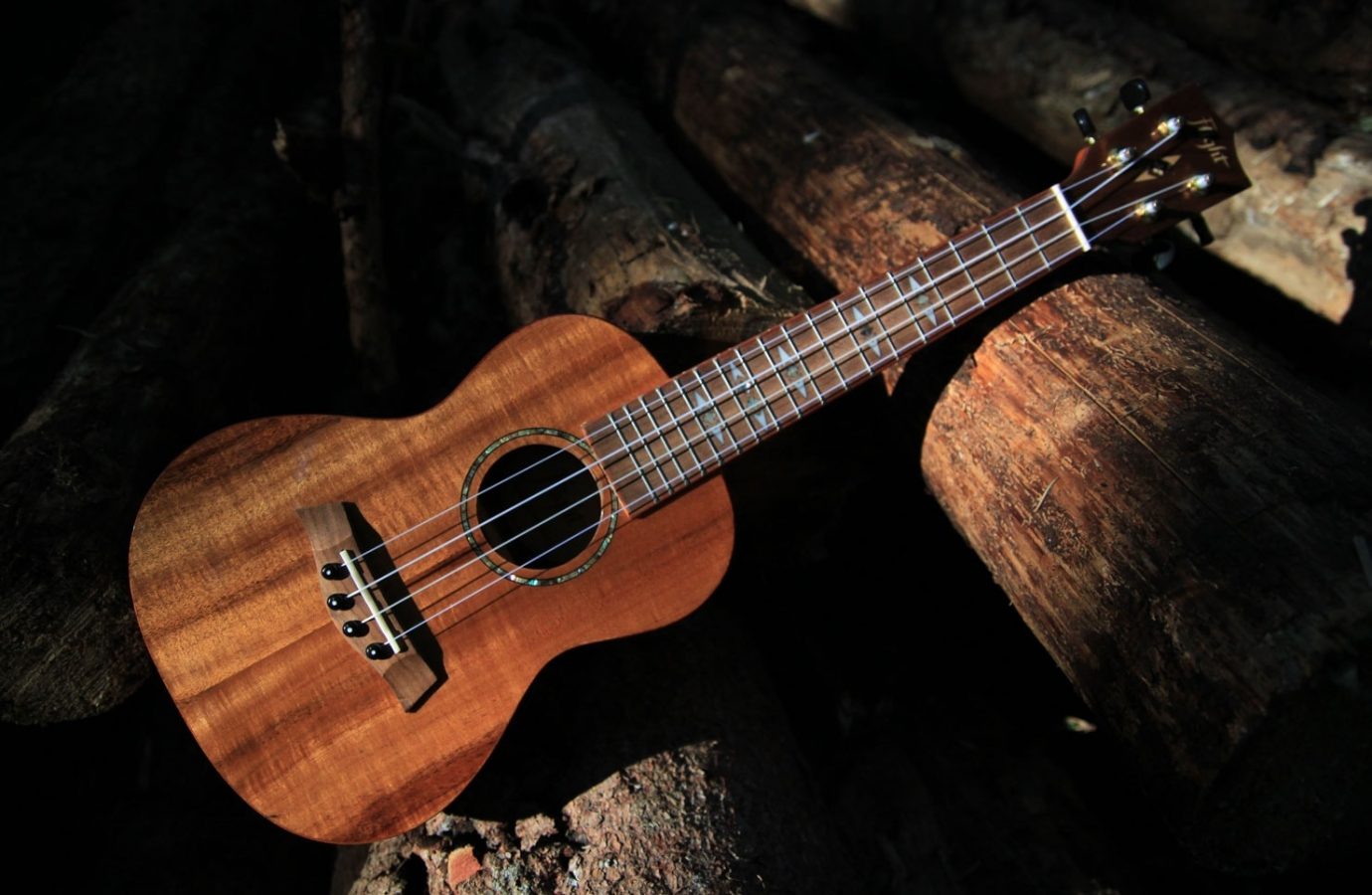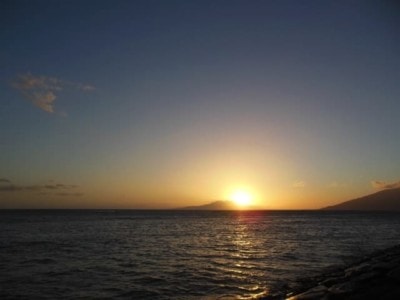Everyone probably knows the sound of a ukulele, often through Israel Kamakawiwoʻole's song "Somewhere over the rainbow". It sounds like Hawaii looks like and is deeply connected to the Pacific island chain. You are already surrounded by the lovely sounds at the airport. It is everywhere and all the time. Just like the traffic noise in many countries and cities. At some point, it is hardly noticeable but leaves many beautiful memories behind.
The ukulele was originally a guitar-like four-stringed box-necked lute whose strings can be double-corded. The instrument is usually about 60 cm long and 20 cm wide, depending on its size with guitar-like proportions and is often dismissed as a toy or children's guitar. Even though many well-known artists use the ukulele live as well as in the studio and it has become a popular instrument. In Hawaii, this has always been the case.
History of the ukulele
Originally, however, the ukulele comes in a modified form from the island of Madeira. The Portuguese immigrant João Fernandez brought it to Hawaii in 1879. At that time, it was still called "braguinha". From that time onwards, it slowly conquered the world. The Hawaiians were delighted with the gift and named the musical instrument "ukulele", which translated means "bouncing flea," representing the impression of fingers moving quickly across the instrument's strings. The indigenous people decided to recreate the ukulele and made the first ukuleles from native koa wood. Fernandez's compatriot, Manuel Nunes, then produced and refined the ukulele, which he manufactured in his factory. He started around 1889 and they became known as Nunes ukuleles worldwide. Nunes is also considered the official inventor of the Hawaiian-style ukulele.
From Hawaii, which has been a state of the United States since 1959, the ukulele came to North America and from there back to Europe. In England, it was used as an accompanying instrument for skiffle music. Through the Billy Wilder movie "Some like it hot", in which Marilyn Monroe plays the ukulele as Sugar, the instrument became further known.
Video tip: Documentary "The Soul of the Ukulele"

By loading the video, you accept YouTube's privacy policy.
Learn more
Known ukulele lists
In Germany, the ukulele has been popular since the late 1990s and is currently experiencing great popularity, as evidenced by increasing workshops and sales. Younger German television audiences in particular are familiar with the ukulele from Stefan Raab's Raabigramme. In the 2000s, singer-songwriter Julia Nunes, who became famous via YouTube, gave the instrument a renewed cult status. The U.S. musician and actress Kate Micucci also performs frequently with her ukulele.
The ukulele became famous internationally famous by Hawaiian musicians Israel Kamakawiwoʻole ("IZ") and Jake Shimabukuro. In the UK, the comedic Ukulele Orchestra of Great Britain performs on this musical instrument and tours around the world. Other well-known musicians who play the ukulele include Elvis, Jane Comerford, Götz Alsmann, Nelly Furtado, George Harrison, Leningrad Cowboys, Paul McCartney, Eddie Vedder and Walk off the Earth.
Jake Shimabukuro - Dragon

By loading the video, you accept YouTube's privacy policy.
Learn more
Jake Shimabukuro with "Eleanor Rigby" on the channel Hi*Sessions - one of the best channels for local musicians from Hawaii!
Construction and mood
Ukuleles are usually made out of wood. Some manufacturers also build them partially or entirely out of plastic. Inexpensive ukuleles are made out of laminated wood and make sense from about 70,- €. Better ones often have a solid spruce top. Other ukuleles, however, are made entirely out of solid exotic wood (e.g. mahogany). The original ukuleles are usually made of koa, a Hawaiian wood known for its sound and typical grain.
Ukuleles often have an eight shape similar to acoustic guitars. However, more unusual body shapes are also popular, such as an oval pineapple shape. Cigar boxes or oil cans are also used for the body of some ukuleles. The standard ukulele has four strings, but they can also be combined into choirs, in which case the instrument has eight strings.
Originally strung with gut strings, today's ukuleles are covered with synthetic strings made either of pure nylon or - in the case of higher-quality versions - with fluorocarbon or nylgut, a new development that is supposed to combine the advantages of a nylon string with the traditional gut string (catgut).
Eddie would go. To the roots of Hawaii's surfing legend Eddie Aikau
Book: Hawaii Lights *
Book: Lavaflow *
The ukuleles almost all have no fasteners for straps on the part of the manufacturer. Therefore, playing with two hands while holding the instrument at the same time is a tricky affair, but this settles with some practice. Some manufacturers offer lightweight straps that wrap around the entire body of the instrument. You can also have pins screwed in at the instrument store, to which a strap can be attached as with the guitar.
There are different models, pitches and tunings. The classic ukulele, which is also the most common, is the soprano ukulele and the concert ukulele. There is also the smaller sopranino ukulele, as well as the concert, tenor and baritone ukuleles (in ascending order of size). There are also five-, six- and eight-stringed instruments in various sizes and designs, but these are rare in Europe.
There are two common tunings for sopranino, soprano, concert and tenor: the so-called C tuning g'-c'-e'-a' (also called Hawaiian tuning), and the so-called D tuning a'-d'-fis'-h' (Classical tuning), which is one whole tone higher. The distribution of the different tunings varies regionally and over time; currently in Europe the D tuning is still quite common, while in Germany the C tuning is popular. Due to the formative spread via the Internet, the C tuning also finds its followers in Europe. The D tuning, on the other hand, was very popular and widespread in the USA at the beginning of the last century. Both in the Anglo-Saxon area and in Europe there are training literature, fingering tables and scores for both tunings. In the past, the tuning e'-a'-cis'-fis' was common for tenor ukuleles, but this has almost disappeared.
The fourth (top) string, unlike the guitar, is tuned in octave in these tunings and thus higher than the middle strings. This gives it the distinctive, "exotic" sound. However, tenor ukuleles in particular are also often tuned with a low 4th string. The baritone ukulele is usually tuned d-g-h-e', whereby the D-string is not octavated here. This shows the proximity to the guitar, whose tuning E-A-d-g-h-e' corresponds to the baritone ukulele except for the two lower strings.
Meanwhile, ukuleles are available in a variety of different designs. There are models with pickups, for example, which can be connected to a guitar amplifier or effects unit. Or even models with cutaway. Various manufacturers offer ukuleles that are modeled on the resonator guitar, the electric guitar, the steel guitar or the contrabass guitar in terms of form and function, for example. For guitar players, on the other hand, who do not want to learn new fingerings in order to get the typical "Hawaiian" sound, there is the gitalele, a mixture of ukulele and guitar. However, especially when playing together with guitars, knowledge of transposing is required, since the gitalele is tuned a fourth higher.
The ukulele banjo (also banjulele) was developed as early as around 1917 by Hawaiian-born Alvin D. Keech. This instrument, also tuned with 4 nylon strings in (g'c'e'a'), has the short neck of a ukulele but the body of a tenor banjo. In the specialized trade there are various models also of important instrument manufacturers (e.g. Gibson or Ludwig). In jazz it was used by Al Bowlly.
Play ukulele

By loading the video, you accept YouTube's privacy policy.
Learn more
In the video Jake Shimabukuro explains some strumming techniques on the ukulele.
If you want more, come to my ukulele workshops and learn about this fantastic instrument in small groups!







